If you have been following my latest articles, The CDP RFP Dating Game and The Reference Call That Changed Everything, you will understand this article even more. This article, a follow-up in a sense, eventhough my goal was not to make a series, was partly inspired by Tealium’s Jay Calavas comment on my LinkedIn post, stating:
“Skip the RFP and focus on use cases and measurable outcomes!”
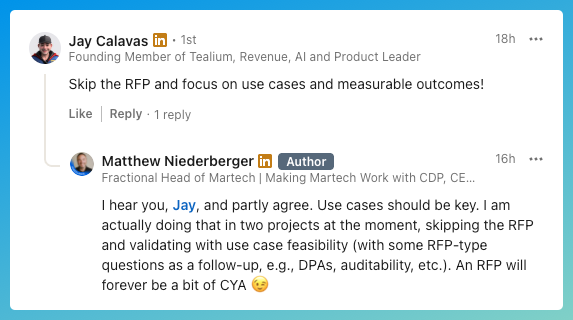
And I’ll be frank, Jay is right: use cases should lead. I’ve even worked on projects where we skipped the RFP entirely and validated tools against use cases first. But many teams can’t avoid the RFP step, especially when procurement and compliance need a seat at the table. For them, the question isn’t “RFP or no RFP?” but
“How do we run an RFP without walking into the usual traps?”
This article offers four practical moves I’ve seen work in real projects. They won’t make the process easy, but they will make it fairer, and far less costly.
Step 1: Ask the right questions in the first conversations
The first conversations with a vendor are often the most revealing, yet too many teams treat them as casual introductions. In reality, they set the tone for everything that follows. This is where you can uncover how a product is truly built, how it has evolved, and whether the promises being made will stand up under scrutiny.
One of the most important questions is about the product’s foundation. Was it built from the ground up as a single platform, or is it the result of a series of acquisitions stitched together over time? That difference shows up later when integrations become brittle or when support teams struggle to cover gaps. Don’t be afraid to dig into the origin story, because it tells you more than the demo ever will.
It also helps to ask vendors to walk you through their own history. “What was this product called before, and what has actually changed beyond the name?” If they hesitate or dance around the answer, that tells you something too. Finally, pin down the reality of today versus the promise of tomorrow. What features are truly available right now, and which ones are still sitting on the roadmap? If something is critical to your use cases, you need it in writing, not as a maybe for the future.
Step 2: Get references you can trust
Reference calls are supposed to provide confidence, yet too often they are carefully stage‑managed extensions of the sales process. Teams walk away reassured, but only because they heard exactly what the vendor wanted them to hear.
To avoid this, start by asking for more than one name. If a vendor only offers you a single client to speak with, that’s a red flag. When you do speak with references, make sure you open with a simple question: “Do you have any financial ties to this vendor?” You don’t want to discover at the end of the call that the glowing review came from someone with a stake in the company.
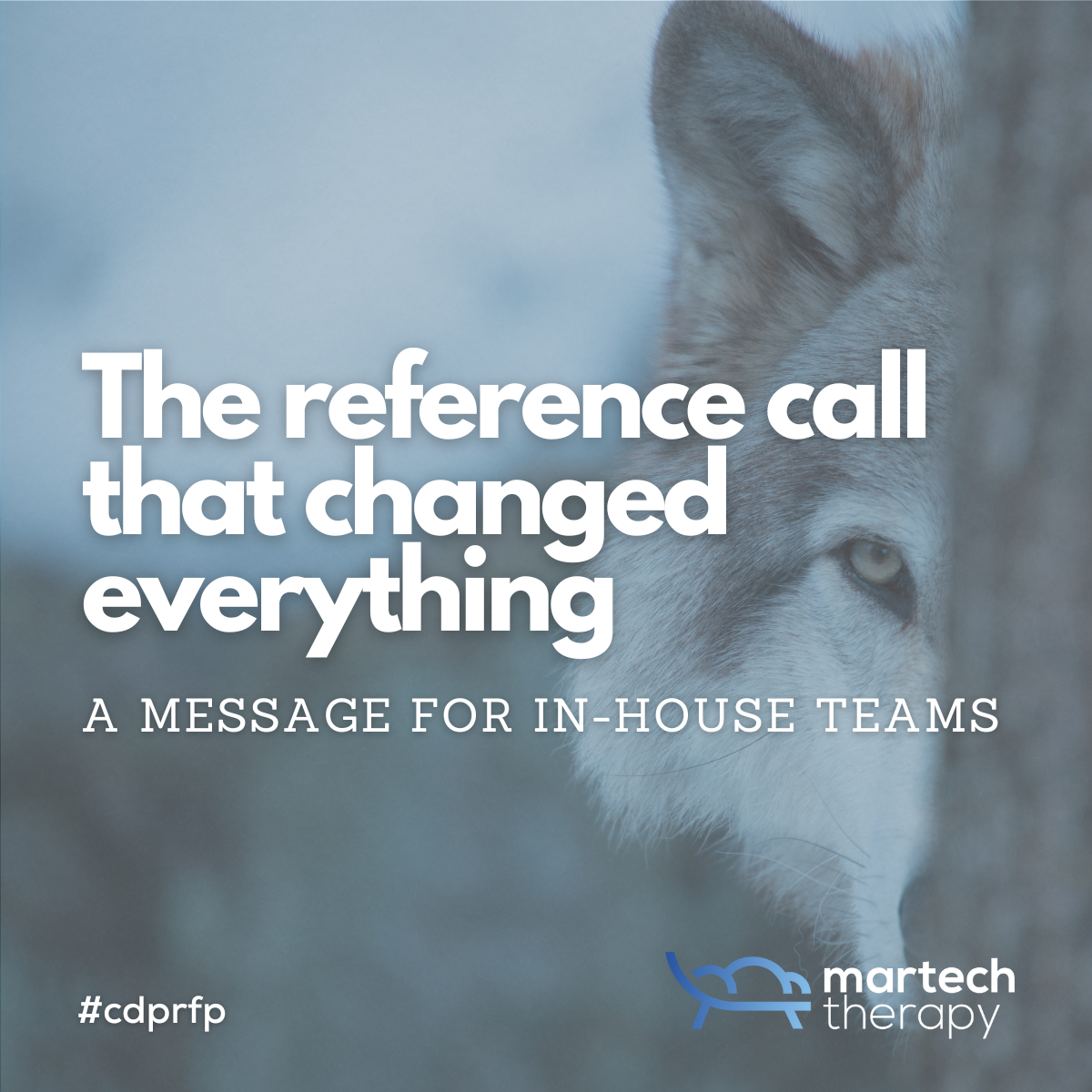
Even when the person on the other end is a genuine customer, don’t settle for polished success stories. Push for the messy details: what were their use cases, what slowed the project down, what costs appeared that weren’t expected, what they would do differently if they had to start over. These are the insights that help you prepare for what’s ahead.
And don’t forget that you can find references yourself. We live in a connected world. LinkedIn, industry Slack groups, and even informal conversations at conferences often yield more candid feedback than any vendor‑arranged call. Those unfiltered stories can save you from repeating someone else’s painful mistakes.
Step 3: Use market pressure to your advantage
Pricing is often treated as the final step in negotiations, but it can also be one of the strongest signals of where the market is heading. Right now, the direction favors buyers, if you know how to use it.
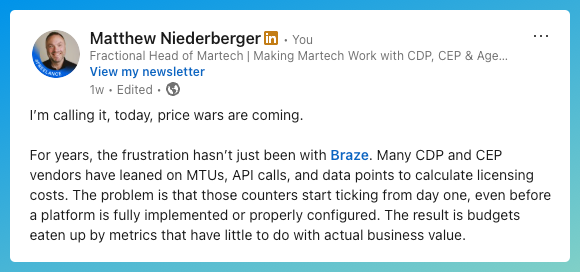
There has been growing frustration with “data point creep,” where costs balloon simply because more data flows through the system, even if campaign activity stays the same. That model is under pressure. Braze, for example, has confirmed it will move to message credits, which means paying for what you actually send rather than every single record that passes through. Other vendors are feeling the same push from customers and will likely follow.

When you go into pricing discussions, bring this up. Ask directly how the vendor is thinking about usage‑based models and what that means for your deal. Use the current buyer’s market as leverage. Push for ramp pricing or pilot phases instead of committing to a big contract from day one. And always make sure the model fits your reality, your actual use cases and volumes, rather than the vendor’s ideal adoption curve.
Step 4: Don’t let marketing carry the load alone
One of the easiest mistakes to make in an RFP is treating it as a marketing project. Marketing may lead the process, but the outcomes affect engineering, analytics, and leadership just as much. When only one group is at the table, the blind spots multiply.
Bring engineering in early, even if it feels like it slows things down. They are the ones who will have to deal with integrations, technical debt, and scalability issues. Involve your data and analytics teams as well. They can tell you whether the platform is capable of delivering the reporting, segmentation, and governance you need. And don’t overlook procurement, because that is where the fine print lives, e.g. data protection agreements, audit rights, SLAs etc. These details rarely show up in demos but can make or break an implementation.
Whatever promises are made along the way, capture them. If a vendor says something in a meeting, write it down, even record all the meetings for reference, and make sure it makes its way into the contract. Otherwise, it doesn’t exist. When different functions inside your company evaluate a solution together, the odds of success improve. Marketing avoids being blamed for missing features, engineers avoid patchwork solutions, and executives avoid pouring money into something that can’t deliver. That’s how you protect the whole organization, not just one team.
The bottom line → protect your team & your budget
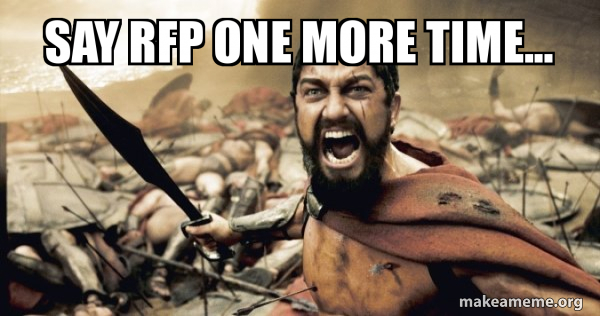
None of these steps make an RFP fun. But they do tilt the balance back toward the buyer. They help you get straight answers instead of sales theater, see through rebrands and roadmaps, use market changes to your advantage, and protect the whole organization, not just the marketing team.
These moves stem from real conversations I have had in the past and continue to have today, not a simple theory. They’re the same tactics I’ve used with clients to cut through vendor tricks and avoid costly mistakes.
And this is where independent guidance makes the difference in a complex world of customer data. A structured RFP led by someone outside the vendor or agency, with close partnerships to a specific vendor loop, keeps the odds fair. It ensures the right questions are asked, promises are captured, and decisions are made on your terms, not the vendor’s.
That’s the work I do. If your team is preparing for a CDP or CEP decision and wants to run an RFP that’s fair, thorough, and designed around your use cases, get in touch.
You don’t need another vendor pitch. You need someone in your corner.


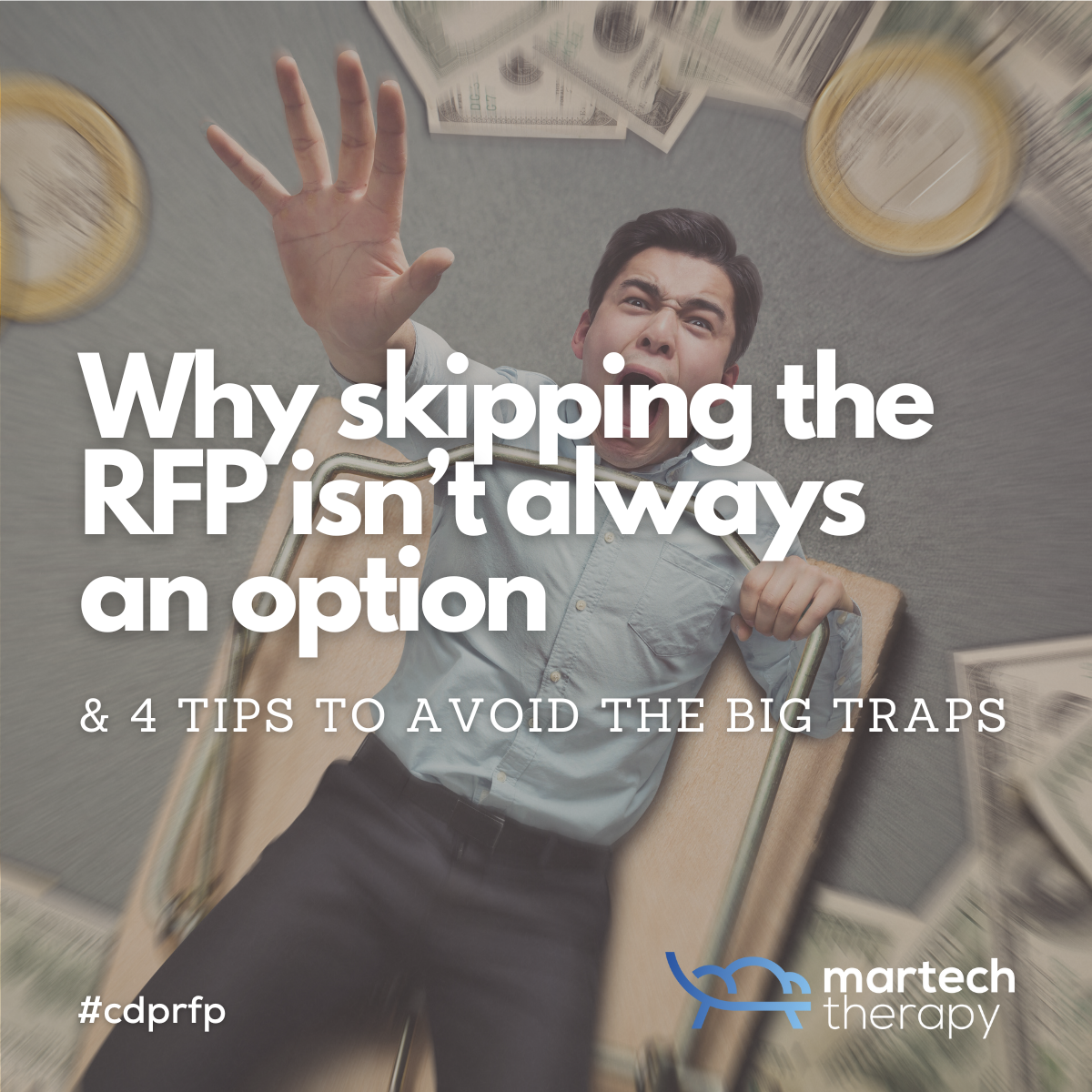

Discussion